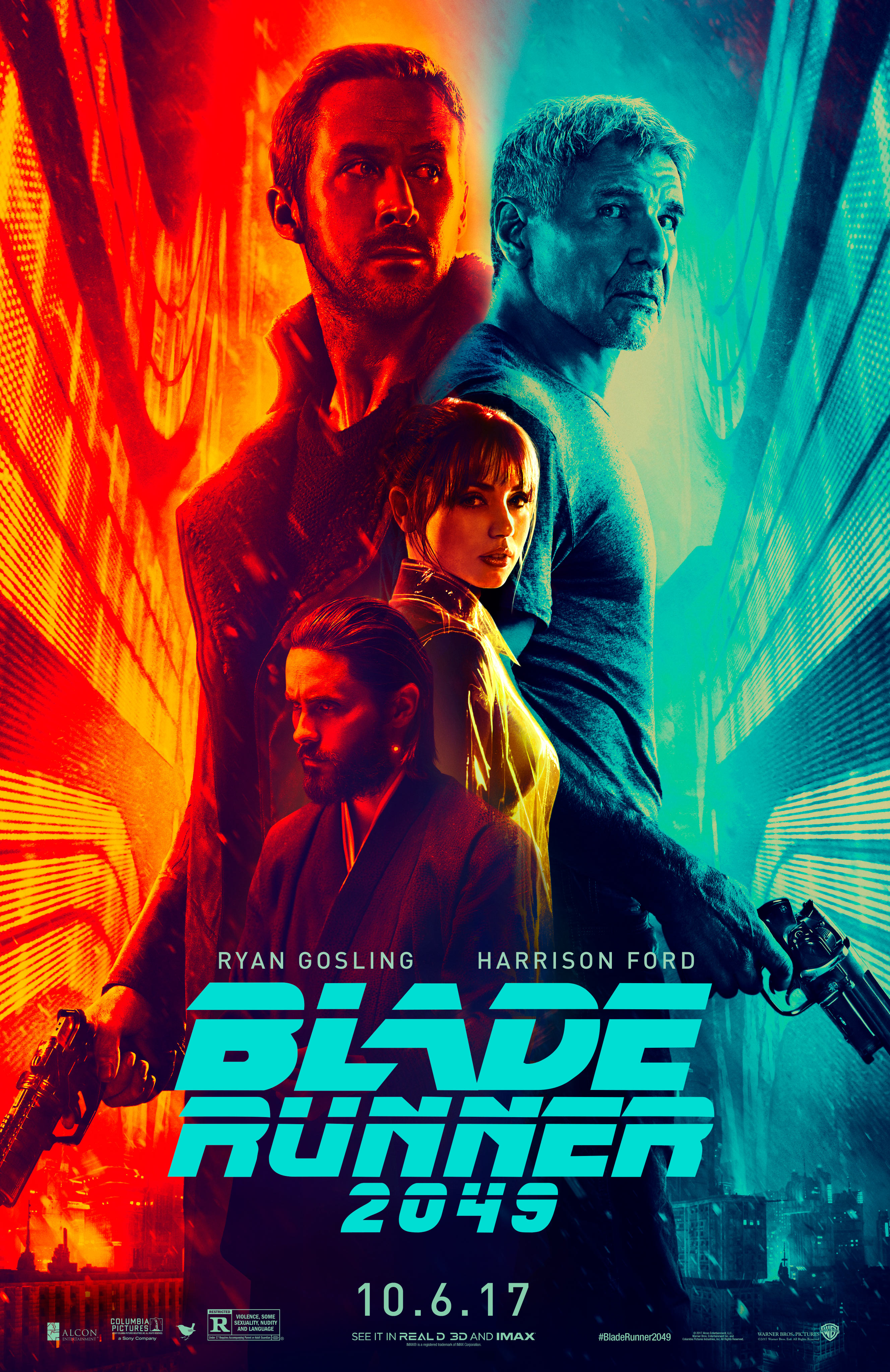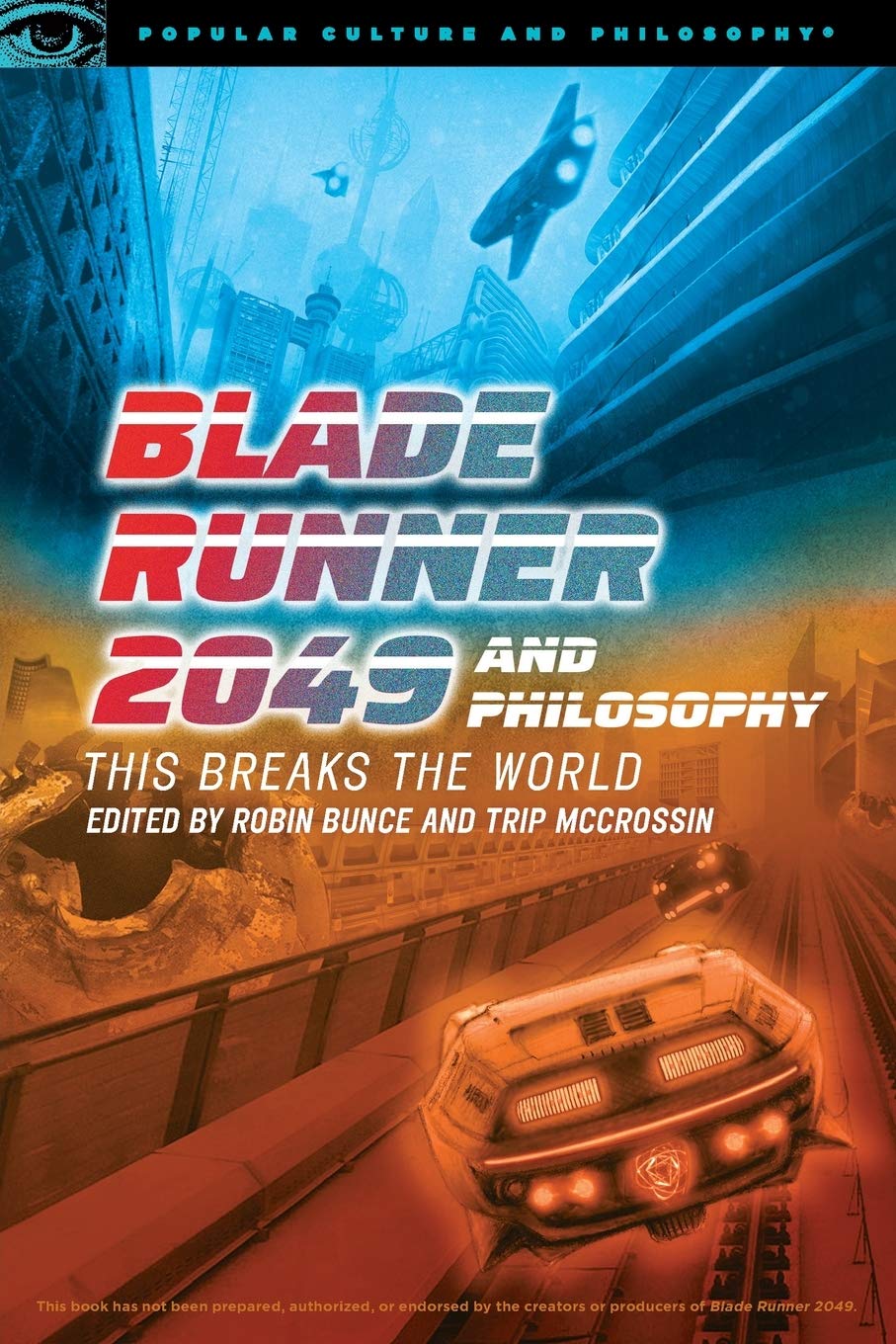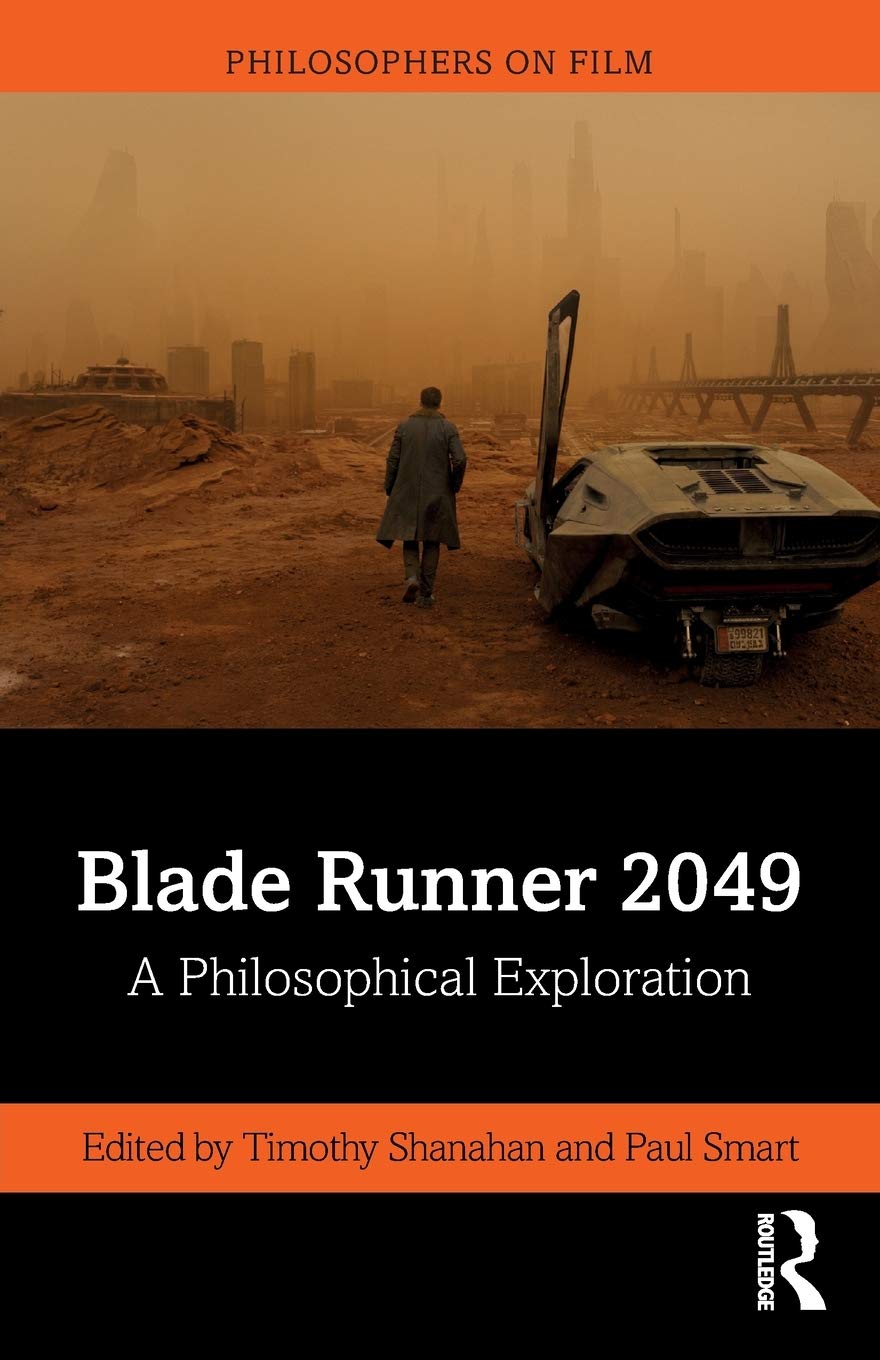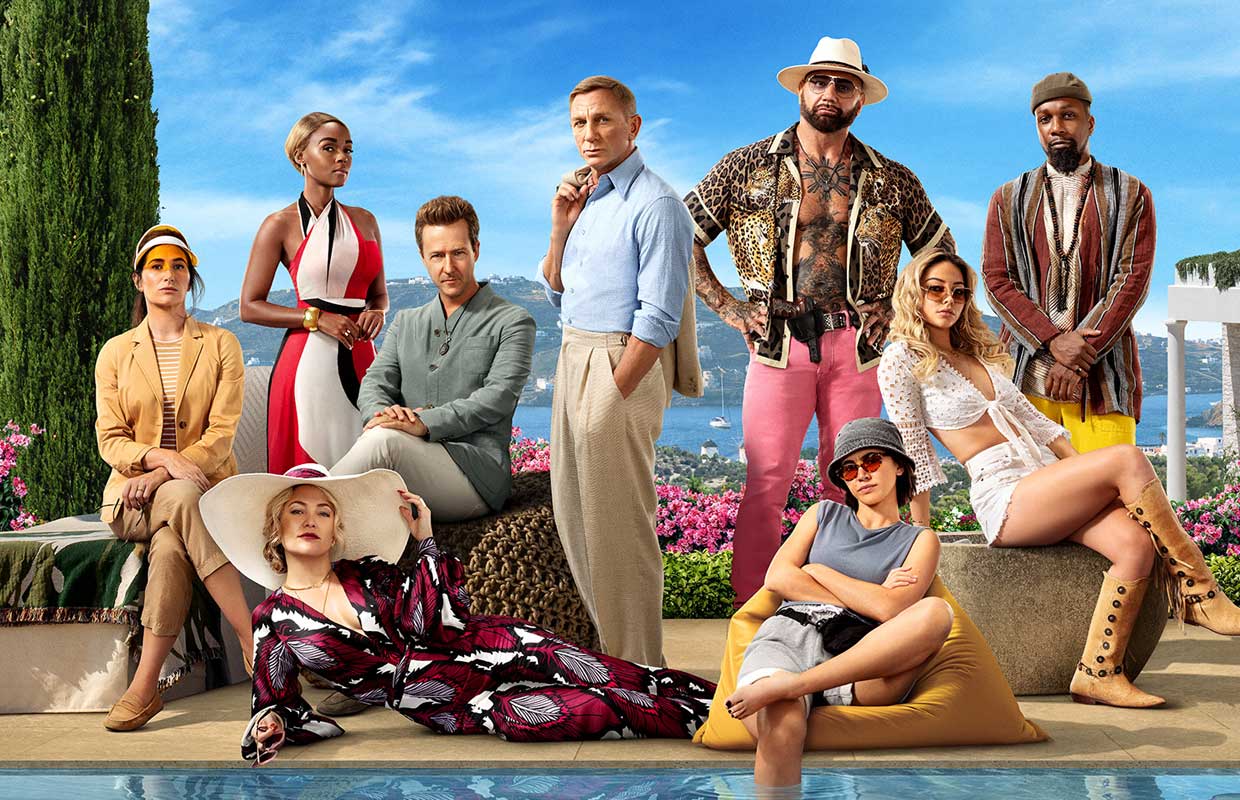
With the 2017 movie Blade Runner 2049 director Denis Villeneuve has created one of the best sequels ever. Starring Ryan Gosling as K, a replicant tasked with hunting down older replicants from a period before what is known as the blackout. K. suffers no small amount of abuse of what he is from other humans and he is quickly drawn into a deadly game to settle the mystery of two replicants that disappeared 30 years back. You can read my review of Blade Runner 2049 if you want to know what makes it a great movie. Below is a dedicated page in which I discuss a number of topics related to movie in greater detail.
Origins
Throughout the 90s there had been much speculation about a sequel to Blade Runner. Director Ridley Scott remained interested and it was suggested to adapt the novels by K.W. Jeter. However, after decades long silence Alcon producers approached Denis Villeneuve after Scott had to pass because of a commitment to Alien: Covenant. Denis quickly put together a squad of dreamers that included designer Aaron Haye, cinematographer Roger Deakins, storyboard artists Sam Hudecki and Darryl Henley. They were later joined by production designer Dennis Gassner. But work on the screenplay started long before that and originated from a short story Hampton Fancher wrote in 2011. This culminated in an 85-page story written by Fancher and Scott in 2013. The work was taken over by Michael Green to turn it into a screenplay. Finally Alcon gave the greenlight for production to start, while Villeneuve was still editing Arrival.
Cast & Crew
Right from the start Harrison Ford was attached to reprise his role as Deckard. After reading the script he was quickly onboard despite some past friction between him and Ridley Scott who contacted him. One reason for accepting the role was “I’m still alive, which I think is a good thing”. Ryan Gosling was first suggested to play K by writer Hampton Fancher. Almost four years later Denis Villeneuve agreed.
Production
Principal photography began in Budapest on July 11th 2016. It was noted there were a number of notable reunions including Sean Young who visited the set and Edward James Olmos who briefly reprises his role as Gaff.
Themes
While Blade Runner 2049 captures much of what made the original a great movie it also does a lot of things new. The premise behind the story is the desire for the wealthy industrialist Neander Wallis to create replicants that can birth children. Throughout the movie it becomes clear that his predecessor Eldon Tyrell has succeeded, but the knowledge was lost with his death. Wallis wants to play god and ignore the personal rights his replicants should have regarding procreation. It is a very feminist theme for a movie set in a world of hyper-sexualization. That latter was not without controversy immediately after the release of the movie. Characters such as Joi and Mariette were considered to be too tailored to male fantasy. Joi being the subservient housewife and Mariette a prostitute.
The idea of something being real or not also extends to K, or Joe as later calls himself. About a third through the movie a recurring dream he has makes him think he might be the replicant child he is trying to ‘retire’. In his mind and in that of the viewer, that would make him ‘real’. A little later Dr. Ana Stelline confirms the memory is real, in that somebody lived it. K knows it wasn’t him, so the real memory is considered to be fake. At the end of the movie Freysa the replicant resistance leader confirms to K that the child was a girl. K deduces only Dr. Ana Stelline could be the girl, her compromised immune system and ability to manipulate and insert memories are proof. Oddly enough this is enough for K to consider himself as Joe, becoming a real replicant of sorts.
Philosophy
The central idea of Blade Runner 2049 is asking what is ‘real’. It is a question that is asked in many different ways. The screenwriters and ergo the movie doesn’t want to answer the question, just provoke a thought. The introduction to the book Blade Runner 2049 and Philosophy author Robin Bunce mentions a few. When K says his memories are not real, he means they are counterfeits, not his own. When Joi calls K “A real boy now” she means he is natural human, not synthetic. Dr. Stelline uses ‘real‘ to means naturalistic. When Mariette teases K does not like ‘real‘ girls she means to say he prefers a virtual companion. Yet K states to Joi she is ‘real‘ to him, probably in the sense that she is meaningful in a way that Mariette is not. Deckard states he knows what is ‘real’, implying what is true.
Tie-in Media
Since its release Blade Runner 2049 has become more popular with many new viewers discovering the multi-layered story. As such a number of comic series has been released recently. Three to be exact: Blade Runner 2019, its sequel Blade Runner 2029 and now also Blade Runner Origins. Their stories are set decades before the movie but tie-in nicely with the original movie by director Ridley Scott. Despite the timeline a number characters that appear in sequel movie appear in the comic series. Events such as the blackout are also expanded upon. The first series – Blade Runner 2019 – was written by Michael Green and Mike Johnson and features art by Andres Guinaldo. All three volumes can now be purchased at Comixology. Blade Runner 2029 continues the story of detective Ashana in dystopian Los Angeles. As of April 2021 the series is four issues into its run.
You can read a review for issue #4 by following the link. A third series has also emerged, Blade Runner Origins. This time the art is by Fernando Dagnino and writers Mellow Brown and K. Perkins added to the team. The series is set in the same verse but feels darker and moodier. The art reminds me a lot of the original Alien movie, which is obviously not a coincidence. So far the travails of LAPD detective Cal Moreaux has been exciting. You can read a review of issue #1 by following the link.
Reference Books
Though the movie was not a box office success it has since become popular on streaming services. With that a number of books have been written. Below is a list for those who want to delve deeper into the world of Blade Runner 2049 and uncover its meaning.
The Art and Soul of Blade Runner 2049
No doubt the most popular book on the movie, you will probably have seen the distinctive orange cover in a bookstore. Written by Tanya Lapointe it contains a chronicle of the development of the movie, from its early ideas and sketches to concept art, storyboards and behind-the-scenes photography. It is basically a coffee table book containing a visual description of the movie. The book is designed by Joe LeFavi and is just incredibly well made. Most of the behind the scene photographs are by photographer Stephen Vaughan. This book contains gorgeous photographs and no small of amount of accompanying text. A copy of The Art and Soul of Blade Runner 2049 can be purchased from Amazon for around $30. If you really want to know more about its design and production, I would recommend this over the other two: Interlinked and The Storyboard. ISBN: 978-1785657580
[ngg src=”galleries” ids=”41″ display=”basic_thumbnail”]Blade Runner 2049 – Interlinked – The Art
Released in August of 2020 and also written by Tanya Lapointe this is sequel to The Art and Soul of Blade Runner 2049. It places more emphasize on the conceptualization of the strong visuals of the movie. Thus the reader will get insight how ideas by the director and his small initial team managed to make their through to becoming sketches, drawings and ultimately part of sets and background cinematography. Just like The Art and Soul this is a coffee table book. Reviewers have noted it is very light on text. Just a sprinkling of paragraphs. I myself would have wanted more descriptions to go with the art so to get more insight into the decision making that went into this movie. For those wanting to pick this book up should consider this is not a ‘making of’ book, but a collection of beautiful sketches, drawings and CG art.
[ngg src=”galleries” ids=”43″ display=”basic_thumbnail”]Blade Runner 2049: The Storyboard
Yet another coffee table book, Blade Runner 2049: The Storyboard is written by Sam Hudecki and Darryl Henley and focuses on the storyboards for the movie. Both describe the process of creating storyboards and its purpose. Hudecki states that it is “looking through the page and seeing the film”. Director Denis Villeneuve even states that storyboards supersede the screenplay, but that is something true for most high-cost productions these days. This book, which is blissfully in the same format as Interlinked – The Art gives insight into the how the practical flow of a scene should play out and how the cinematography by Roger Deakins strengthens that. However, despite there being a good amount of accompanying text to describe the creative process that went into Blade Runner 2049 this book mostly contains just storyboard sketches. I bought it because I am a fan of Villeneuve and Deakins.
[ngg src=”galleries” ids=”44″ display=”basic_thumbnail”]Yet I think this book is more intended for those aspiring to draw storyboards themselves, or screenwriters trying to imagine the next step. Careful reading of this book does reveal interesting decisions that affected the final film. There is also material here that did not make it into the film. Just as with Interlinked – The Art I remain skeptical if a regular fan should buy this book. It is big, expensive and weighs a ton.
Blade Runner 2049 and Philosophy
This book is edited by Robin Bunce and Trip McCrossin and was released in September of 2019. Part of the ‘Popular Culture and Philosophy’ series it is actually a collection of 20 articles on various philosophical aspects of replicants in the Blade Runner-verse. Besides the sequel movie the original is also covered as are the books by K.W. Jeter and the spin-off shorts. It can be purchased on Amazon for around $19.99.

Blade Runner 2049: A Philosophical Exploration
Similar to the book by Bunce and McCrossin this is also a collection of articles by a wide variety of authors. Released at the same time I am not certain which books is best. Preferably you should get both to obtain a proper understanding of Blade Runner 2049. This edition does contain a foreword by director Denis Villeneuve. It may be a little bit expensive with the paperback only starting at $44.99 on Amazon. It does contain a still image from the movie as cover so no doubt the publisher managed to get the rights.

References
BladeRunner2049Movie.com: this is an dormant website from 2016. It is visually beautiful and acts in my opinion as a way back machine.
BladeRunner.fandom.com: this a wiki-style page dedicated to 2049. It has an interesting plot summary as it is divided into days. Which I did not know of previously. There are of course also links to the original Blade Runner movie.
Buf.com: a brief description of some of the special effects the company crated for Blade Runner 2049.
BladerunnerFanatic.tumblr.com: an excellent Tumblr page featuring gorgeous fan art for Blade Runner 2049 as well as the original movie.


